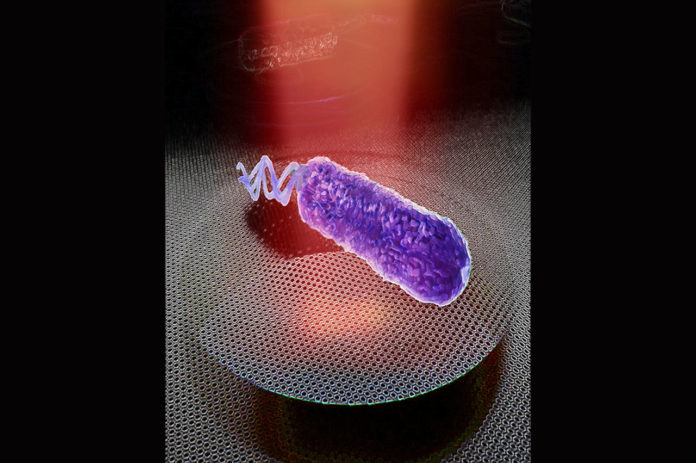Experimental studies have revealed that bacteria generate molecular noise. A team of researchers from TU Delft managed to capture a single bacterium’s low-level noise using graphene.
While observing the basics of the mechanics of graphene, scientists wondered what would happen if graphene came in contact with a single biological object. To determine, scientists- in collaboration with the nano biology group of Cees Dekker and the nanomechanics group of Peter Steeneken- ran experiments with E. coli bacteria.
When the bacteria comes in contact with drums made of ultrathin bilayer graphene, it generates a random oscillation with up to 60 nm amplitudes. At the same time, it exerts forces up to 6 nN on its environment.
What causes these small oscillations?
The answer is the biological processes of the bacteria, with the main contribution from their flagella (tails on the cell surface that propel bacteria).
Dr. Farbod Alijani, who led the study, said, “What we saw was striking! When a single bacterium adheres to the surface of a graphene drum, it generates random oscillations with amplitudes as low as a few nanometers that we could detect. We could hear the sound of a single bacterium!”
“To understand how tiny these flagellar beats on graphene are, it’s worth saying that they are at least 10 billion times smaller than a boxer’s punch when reaching a punching bag. Yet, these nanoscale beats can be converted to soundtracks and listened to – and how cool is that.”
Scientists noted, “This research has enormous implications for detecting antibiotic resistance. The experimental results were unequivocal: If the bacteria were resistant to the antibiotic, the oscillations continued at the same level. When the bacteria were susceptible to the drug, vibrations decreased until one or two hours later, but then they were completely gone. Thanks to the high sensitivity of graphene drums, the phenomenon can be detected using just a single cell.”
Farbod Alijani: “For the future, we aim at optimizing our single-cell graphene antibiotic sensitivity platform and validate it against a variety of pathogenic samples. So that eventually it can be used as an effective diagnostic toolkit for fast detection of antibiotic resistance in clinical practice.”
Peter Steeneken concludes: “This would be an invaluable tool in the fight against antibiotic resistance, an ever-increasing threat to human health around the world.”
Journal Reference:
- Rosłoń, I.E., Japaridze, A., Steeneken, P.G. et al. Probing nanomotion of single bacteria with graphene drums. Nat. Nanotechnol. (2022). DOI: 10.1038/s41565-022-01111-6
